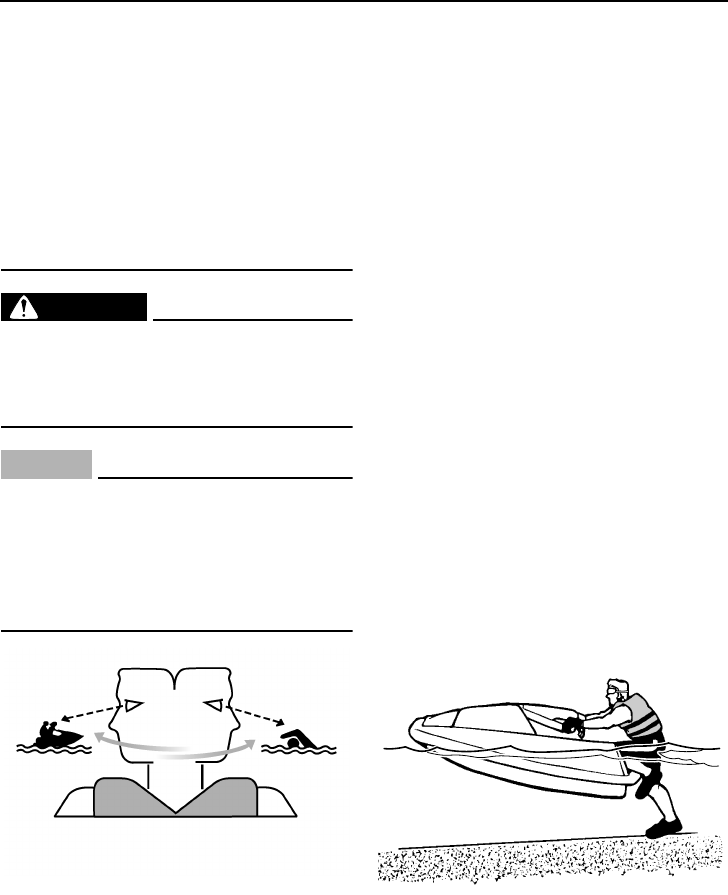
Operation
50
sharp turns or other maneuvers that
make it hard for others to avoid you or
understand where you are going. Avoid
areas with submerged objects or shal-
low water.
● Take early action to avoid collisions. Re-
member, watercraft and other boats do
not have brakes. Do not release the
throttle lever when trying to steer away
from objects—you need throttle to steer.
WARNING
EWJ00632
Avoid forceful jet thrust and limited visibil-
ity while reboarding. Get to a standing or
kneeling position quickly, but do not ex-
pose yourself to the forceful jet thrust.
NOTICE
ECJ01340
Never run the engine in water that is less
than 60 cm (2 ft) deep from the bottom of
the watercraft, otherwise pebbles or sand
could be sucked into the jet intake, caus-
ing impeller damage and engine overheat-
ing.
The watercraft is less stable when at a stand-
still or at a slow speed. It takes skill to keep the
watercraft upright when starting.
To stabilize the watercraft when accelerating
to planing speed, maintain a low center of
gravity by operating it in the kneeling position.
Even though it is easier to start in shallow wa-
ter, you must learn deep-water boarding first.
You will inevitably fall off, so be sure you know
how to get back on the watercraft once you
are away from shore.
EJU33104
Boarding and starting in shallow water
Be sure to learn the deep-water starting meth-
od before operating the watercraft in water
where it is too deep for you to stand. (See
page 51 for the deep-water starting method.)
(1) Launch the watercraft in water free from
weeds and debris and at least 60 cm (2 ft)
deep from the bottom of the watercraft.
NOTICE: Never run the engine in water
that is less than 60 cm (2 ft) deep from
the bottom of the watercraft, other-
wise pebbles or sand could be sucked
into the jet intake, causing impeller
damage and engine overheating.
[ECJ00472]
(2) Attach the engine shut-off cord (lanyard)
to your left wrist, and then attach the clip
to the engine shut-off switch.
(3) Grip the handlebars with both hands.
Place one knee on the riding tray and bal-
ance there.
(4) Look in all directions, start the engine,
and then begin to accelerate.
UF2F12E0.book Page 50 Tuesday, July 14, 2009 3:07 PM


















